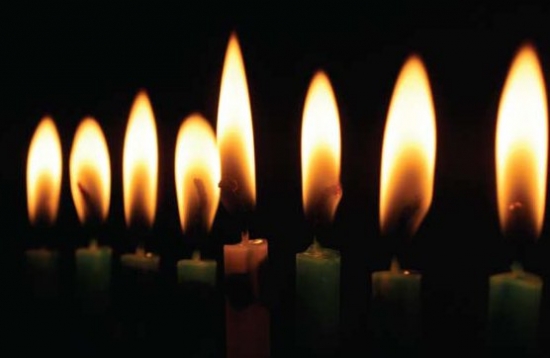
Photo by Alex Ringer, Israel ©2008
In memory of Yaakov Yehudah Frimer
Chanukah is a fortunate holiday. Ostensibly a minor observance (think Rosh Chodesh or one of the minor fasts), the last hundred and twenty years have brought it to the forefront of Jewish consciousness. There have been three major factors in this development:
(1) The commercialization of Christmas among our Christian neighbors, which has put pressure on many sectors of the Jewish community to compete.
(2) The early Zionist movement focused on nationalist themes that could only be found in the story of Chanukah.
(3) Lubavitch has made Chanukah one of the focal points of their efforts to reinforce Jewish identity and faith. The highly prominent and ubiquitous Chabad menorahs have added a new dimension to the mitzvah of publicizing the miracle, making it difficult for any but the most assimilated to ignore the existence of the holiday.
While the proximity of Chanukah to Christmas may only be a coincidence, the location of Chanukah in the Jewish calendar is not, and bears a great deal of symbolism. As Rabbi Francis Nataf points out (http://www.tzemachdovid.org/ideas/idea56.html), Chanukah always falls on or near the Northern Hemisphere's winter solstice (the shortest day in the year, or more to the point, the longest night). Once we pass the solstice, the days slowly and then rapidly get longer.
If Chanukah's place on the solar calendar seems revealing, its place on the Jewish calendar is even more fascinating: there are two high points in the Jewish calendar - the first day in Tishrei [month of the High Holidays and Sukkot] and the first day in Nissan [month of Passover]. Indeed, the Talmud, Tractate Rosh Hashanah 10b-11a, records a disagreement among our sages as to which one of these two months marked the creation of the world. In any case, the midpoint between these highlights (in a regular non-leap year) is the last day in Kislev, which is the midpoint of Chanukah. While Chanukah's position on the solar calendar makes it the shortest physical days, the lunar calendar places it on the shortest spiritual days - in the biblical calendar, the longest gap between holidays is that between Tishrei and Nissan. Just as we receive the least physical sunlight on the solstice, Chanukah's distance from the seasons of our spiritual light also makes this time of year the most spiritually dark. And as with the solstice marking a turning point, the 29th of Kislev marks the beginning of the slow return to the greater spiritual light of Nissan.
If Chanukah appears in a dark place on our calendar, it also appears in a dark place in our history. The Hellenization of Judea that led to the Maccabean revolt was a process largely led by the Jews themselves. While Jews had succumbed to the attraction of false foreign beliefs many times previously, Chanukah marks the first time that Jews were prepared to betray their nation. The Hellenization of Jerusalem was brought about by Jews who felt that Jewish nationality was inferior to the larger newer culture of the Greeks. Instead of proclaiming the unique message of Jerusalem, Jerusalem became a cheap imitation of Athens and Alexandria. Thus, it was not just Jewish practice that was in question, it was also Jewish peoplehood.
As with the limits on darkness found in the solar and lunar calendars, there is a limit to the spiritual darkness in Jewish history - there is some light within the Jewish people that cannot be extinguished. Thus, Chanukah reinforces the belief we Jews have that “in every generation there are those who rise up to destroy us – but the Almighty saves us from their hands” (Hagadda). This is epitomized on Chanukah itself by the miracle of the flask of oil - a small light that would not go out.
But the story of Chanukah tells us something more: the light doesn’t go out if someone cares. The High Priest hid the pure oil preparing the way. And the Maccabees looked for the oil which also facilitated the miracle. And it is our obligation to light candles, as the Chanukah song says: Banu hoshekh le-garesh – we have come to chase away the darkness. The message is clear – in the depth of the darkness we are commanded to search for the pach ha-shemen – the flacon of oil to light the lights.
This idea is beautifully put by Rabbi Joseph B. Soloveitchik. The Rov has noted that in the beginning of creation, G-d was surrounded by darkness, and the Lord declared: “Let there be light.” The verse “And you shall walk in His ways” (Deut. 28:9) bids us to imitate G-d – imitatio Dei - and follow in his ways. Hence, says the Rov, in our personal lives, when we too are faced by tragedy and surrounded by darkness, the Jewish response is to say: “Let there be light,” to restart the creative process by rebuilding and reconstructing.
Perhaps herein is the true message of Beit Hillel, who instructed the Jewish people to light an additional candle each night of Chanukah. It is our job to help G-d watch over us by spreading the light of Tradition and by publicizing the ongoing miracle of our salvation.
Rabbi Dr. Aryeh A. Frimer is the Ethel and David Resnick Professor of Active Oxygen Chemistry at Bar Ilan University.
 DEAR EDITOR 157 MAGAZINE
DEAR EDITOR 157 MAGAZINE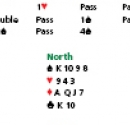 COUNTING ON INFERENCE
COUNTING ON INFERENCE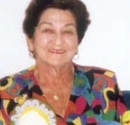 SHULAMIT LAMIE RAVINSKY 1925-2010
SHULAMIT LAMIE RAVINSKY 1925-2010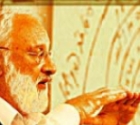 Kabbalah For All
Kabbalah For All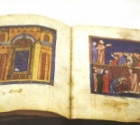 Haggadot
Haggadot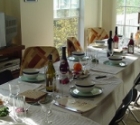 Passover 5767 ...The Holiday of Freedom
Passover 5767 ...The Holiday of Freedom Aryeh A. Frimer
Aryeh A. Frimer